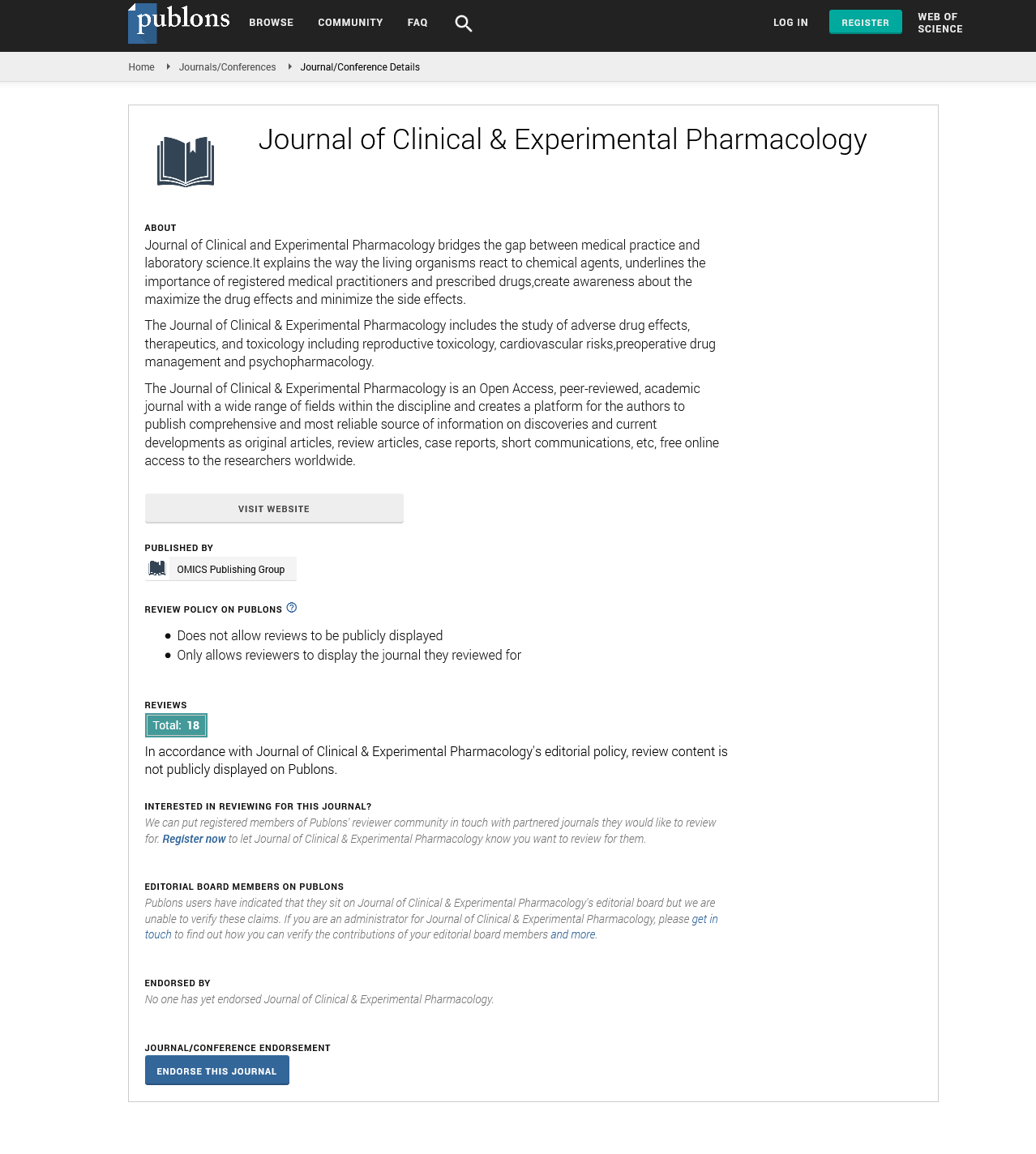Indexed In
- Open J Gate
- Genamics JournalSeek
- China National Knowledge Infrastructure (CNKI)
- Ulrich's Periodicals Directory
- RefSeek
- Hamdard University
- EBSCO A-Z
- OCLC- WorldCat
- Publons
- Google Scholar
Useful Links
Share This Page
Journal Flyer

Open Access Journals
- Agri and Aquaculture
- Biochemistry
- Bioinformatics & Systems Biology
- Business & Management
- Chemistry
- Clinical Sciences
- Engineering
- Food & Nutrition
- General Science
- Genetics & Molecular Biology
- Immunology & Microbiology
- Medical Sciences
- Neuroscience & Psychology
- Nursing & Health Care
- Pharmaceutical Sciences
Attenuation of diabetic neuropathy in experimental diabetes in rats by methanolic extract of Anogeissus acuminata bark
5th International Conference and Exhibition on Pharmacology and Ethnopharmacology
March 23-25, 2017 Orlando, USA
Archana Navale and Archana Paranjape
Parul University, India
Edutech Learning Solutions Pvt. Ltd., India
Posters & Accepted Abstracts: Clin Exp Pharmacol
Abstract:
Aim: Diabetic Neuropathy (DN) is a debilitating condition associated with Diabetes Mellitus (DM) and develops even in patients taking antidiabetic treatment. Anogeissus acuminata is rich in phenolic compounds and may have potential beneficial effects in DM. Aim of our work was to assess the antidiabetic and neuroprotective effect of methanolic extract of Anogeissus acuminata bark (MEAA). Methods: Rats with DM induced by streptozotocin were treated with MEAA for 8 weeks at doses 100 and 300 mg/kg, orally. Human NPH Insulin (4IU/kg, s.c.) was used as standard treatment. Plasma glucose levels and oxidative stress parameters were measured. Effect on DN was observed by assessment of thermal nociceptive function using hot plate method, chemical allodynia using formalin test, autonomic neuropathy using intestinal charcoal meal test and impairment of nerve conduction by sciatic nerve conduction velocity. Results: MEAA produced significant (p<0.05) hypoglycemic and antioxidant effect. MEAA also caused significant increase in nociceptive response time (19.0±1.2, 20.0±1.4 for 100 mg/kg and 300 mg/kg vs. 11±1.2 S for control rats) in hot plate test. There was less chemical allodynia in MEAA rats as indicated by fewer limb flinches (25.1±1, 24.1±1.6 for 100 mg/kg, 300 mg/kg) vs. that in control rats (33.3±1.8). There was significant improvement in intestinal transit of charcoal meal (63.5±2.9, 65.2±3.1 vs. 52.5±2.3% for control) and sciatic nerve conduction velocity (40.6±1.0, 42.3±0.8 vs. 35.4±1.1 m/s). Thus, MEAA could attenuate development of DN and had hypoglycemic and potent antioxidant action.
Biography :
Email: archanachavan_83@yahoo.co.in

